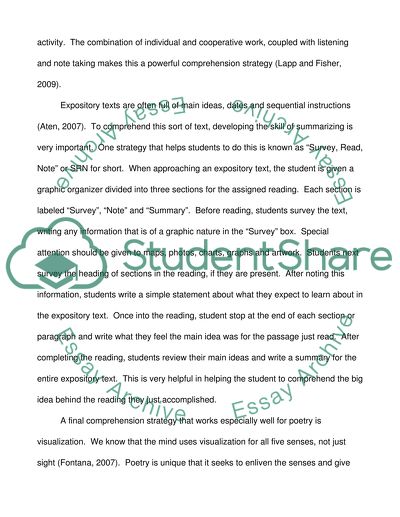Comprehension strategies Essay Example | Topics and Well Written Essays - 500 words. Retrieved from https://studentshare.org/education/1468552-comprehension-strategies
Comprehension Strategies Essay Example | Topics and Well Written Essays - 500 Words. https://studentshare.org/education/1468552-comprehension-strategies.


